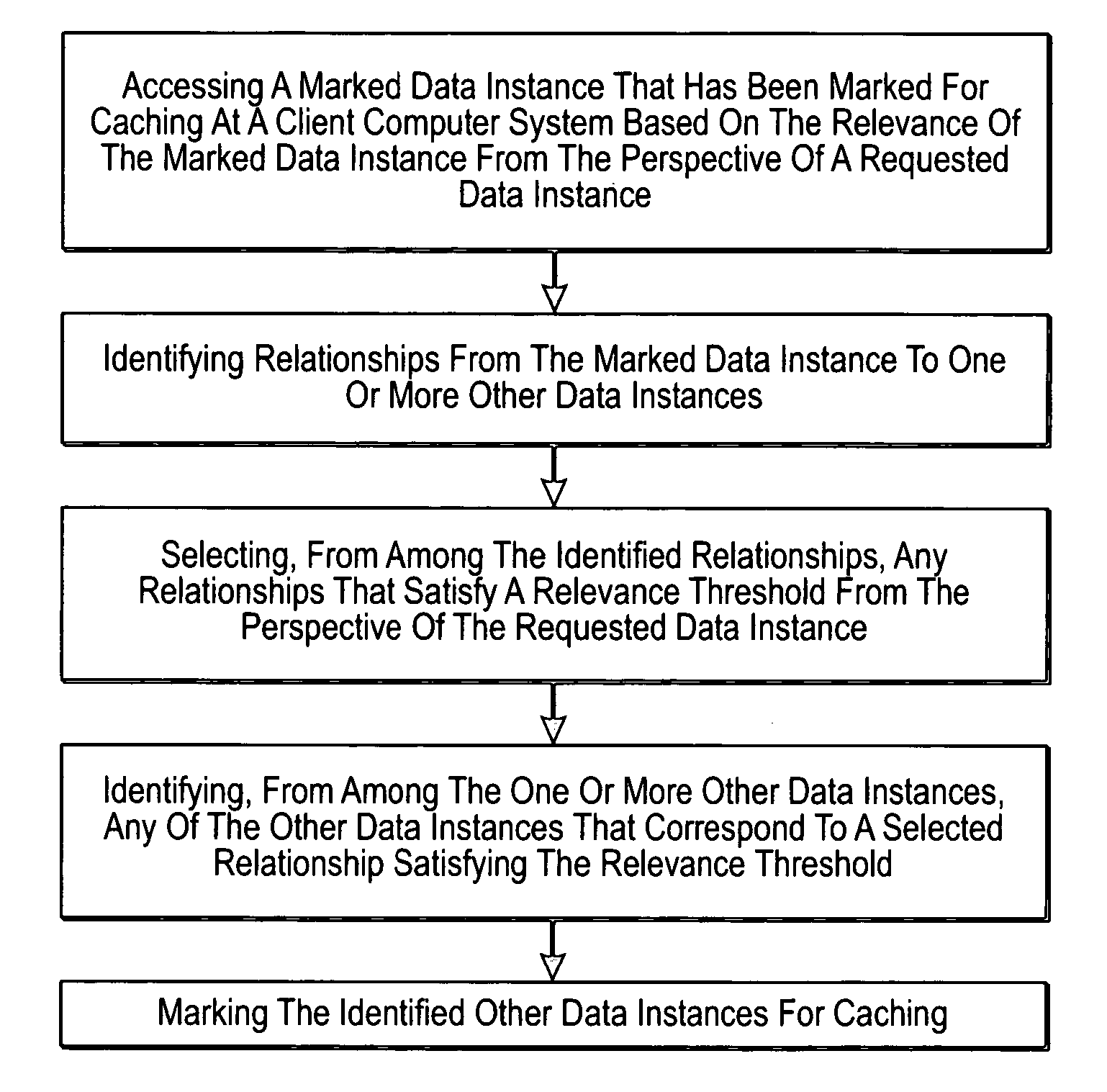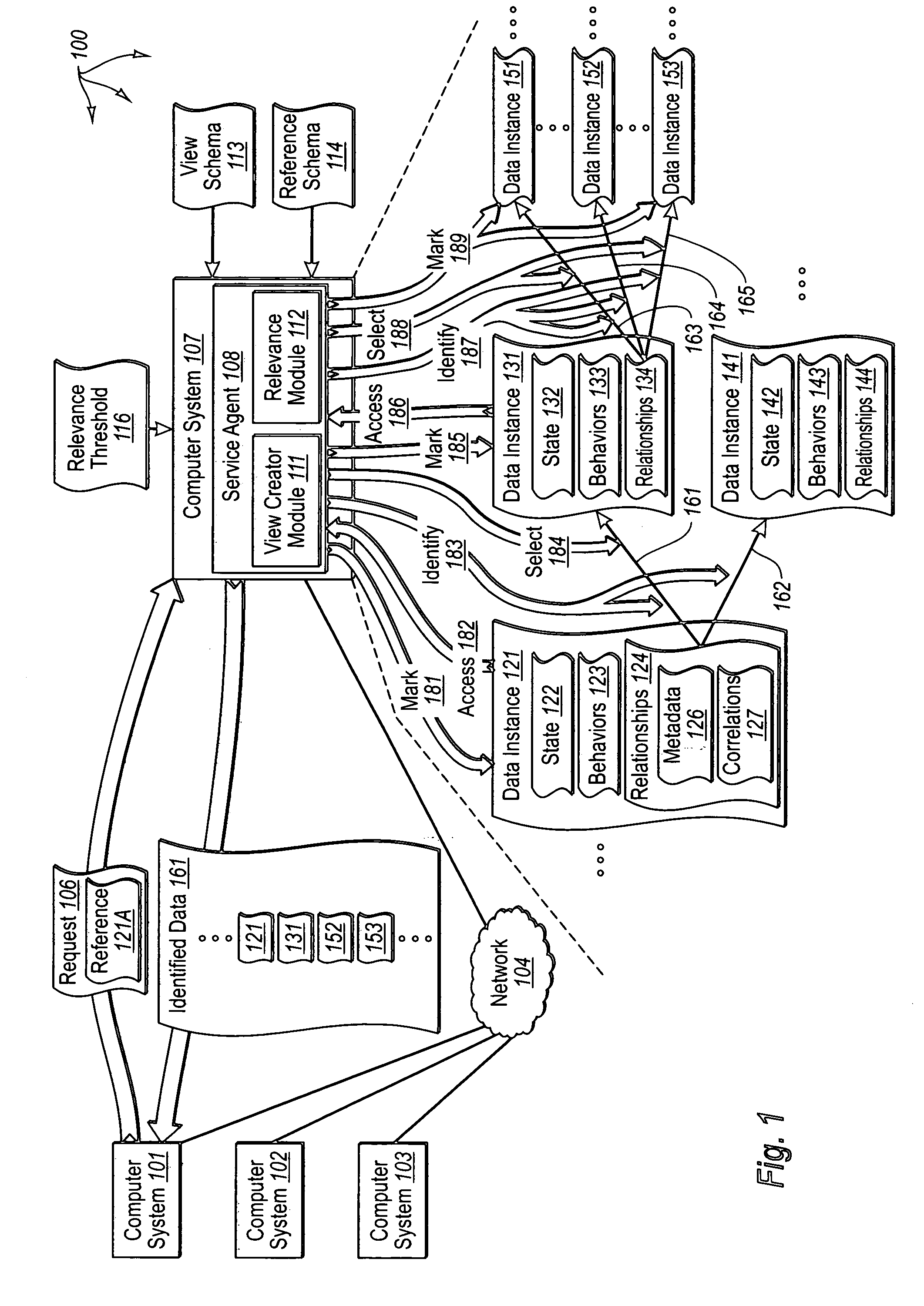Identifying relevant data to cache
a technology of relevant data and cache, applied in the field of identifying relevant data to cache, can solve the problems of accessing and manipulating network based content, and the granularity of cache configuration settings is often limited, and administrators may find it difficult, if not impossible, to configure cache settings
- Summary
- Abstract
- Description
- Claims
- Application Information
AI Technical Summary
Problems solved by technology
Method used
Image
Examples
Embodiment Construction
[0017] The principles of the present invention provide for identifying relevant data to cache. A computer system accesses a marked data entity that has been marked for caching at a client computer system. The marked data entry is marked for caching based on the relevance of the marked data entity from the perspective of a requested data entity. The computer system identifies relationships from the marked data entity to one or more other data entities. The computer system selects, from among the identified relationships, any relationships that satisfy a relevance threshold from the perspective of the requested data entity. The computer system identifies, from among the one or more other data entities, any of the other data entities that correspond to a selected relationship satisfying the relevance threshold. The computer system marks the identified other data entities for caching.
[0018] Embodiments within the scope of the present invention include computer-readable media for carryi...
PUM
 Login to View More
Login to View More Abstract
Description
Claims
Application Information
 Login to View More
Login to View More - R&D
- Intellectual Property
- Life Sciences
- Materials
- Tech Scout
- Unparalleled Data Quality
- Higher Quality Content
- 60% Fewer Hallucinations
Browse by: Latest US Patents, China's latest patents, Technical Efficacy Thesaurus, Application Domain, Technology Topic, Popular Technical Reports.
© 2025 PatSnap. All rights reserved.Legal|Privacy policy|Modern Slavery Act Transparency Statement|Sitemap|About US| Contact US: help@patsnap.com



